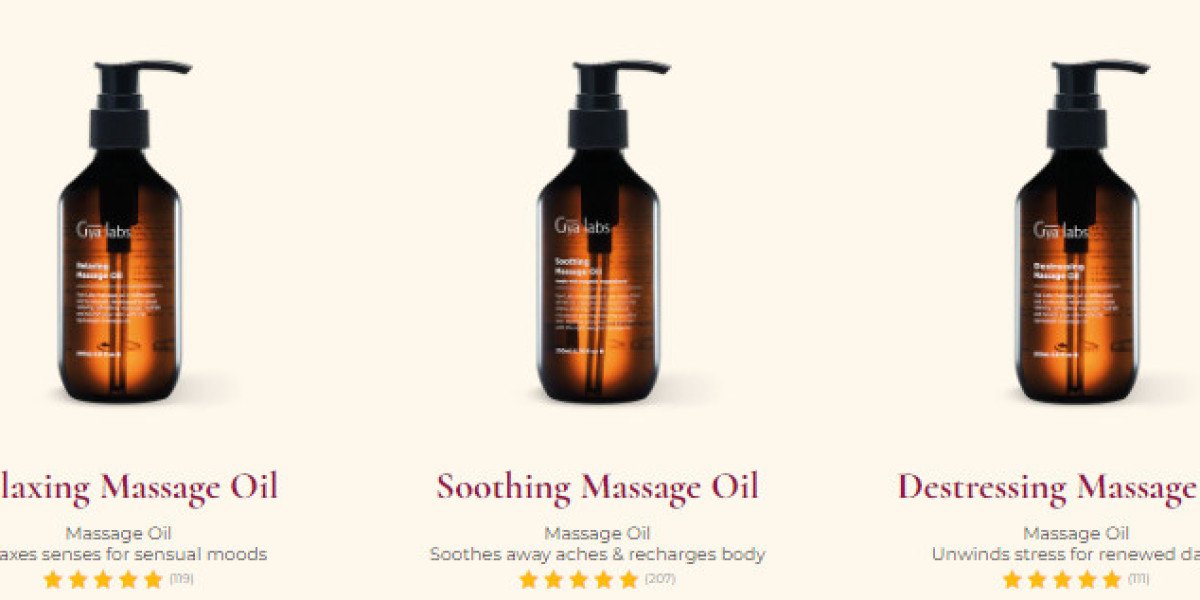Massage oil is a great way to enhance your massage experience, whether you're giving or receiving one. It can help to reduce friction, making the massage strokes smoother and more comfortable. It can also help to hydrate and nourish the skin, leaving it feeling soft and silky.
Making your own massage oil is a great way to save money and customize the oil to your own preferences. You can choose the carrier oil and essential oils that you like best, and you can control the dilution rate of the essential oils to ensure that the oil is safe to use on your skin.
What you need:
- Carrier oil: This is the base oil that will dilute the essential oils. Popular carrier oils include sweet almond oil, jojoba oil, grapeseed oil, and coconut oil.
- Essential oils: These are the oils that will give your massage oil its therapeutic properties. Popular essential oils for massage include lavender oil, peppermint oil, chamomile oil, and ylang-ylang oil.
- A clean glass bottle or jar
- A funnel
- A label
Instructions:
- Choose your carrier oil. Consider your skin type when choosing a carrier oil. If you have dry skin, you may want to choose a more moisturizing carrier oil, such as sweet almond oil or avocado oil. If you have oily skin, you may want to choose a lighter carrier oil, such as jojoba oil or grapeseed oil.
- Choose your essential oils. If you're new to essential oils, start with one or two essential oils that you know you like. Once you're more comfortable with essential oils, you can experiment with blending different oils to create your own unique massage oil blends.
- Calculate the dilution rate. The dilution rate is the amount of essential oil that you should add to the carrier oil. The recommended dilution rate for adults is 2%. This means that you should add 18 drops of essential oil to every 30 ml of carrier oil.
- Mix the carrier oil and essential oils. Add the carrier oil to the glass bottle or jar first. Then, add the essential oils. Use a funnel to help you add the essential oils without spilling them.
- Cap the bottle and shake it gently to mix the oils together.
- Label the bottle with the name of the massage oil, the ingredients, and the date that you made it.
Tips:
- Store your massage oil in a cool, dark place.
- Before using your massage oil, do a patch test on a small area of your skin to make sure that you're not allergic to any of the essential oils.
- If you're pregnant or breastfeeding, talk to your doctor before using any essential oils.
Here are some massage oil recipes to get you started:
Relaxing massage oil:
- 1 tablespoon sweet almond oil
- 5 drops lavender essential oil
- 3 drops chamomile essential oil
Invigorating massage oil:
- 1 tablespoon jojoba oil
- 5 drops peppermint essential oil
- 3 drops rosemary essential oil
Sensual massage oil:
- 1 tablespoon grapeseed oil
- 5 drops ylang-ylang essential oil
- 3 drops sandalwood essential oil
You can also use your massage oil to create a customized massage experience. For example, if you're feeling stressed, you could use a relaxing massage oil with lavender and chamomile essential oils. If you're feeling sore and achy, you could use an invigorating massage oil with peppermint and rosemary essential oils. And if you're looking for a romantic massage, you could use a sensual massage oil with ylang-ylang and sandalwood essential oils.
Here are some tips for using your massage oil:
- Warm up the massage oil before using it. This will make it easier to apply and will help to relax the muscles.
- Apply the massage oil to the skin in a light, even layer.
- Use long, smooth strokes when massaging.
- Focus on areas of tension and soreness.
- Don't forget to massage the hands, feet, and neck.
Massage can be a great way to relieve stress, tension, and pain. It can also help to improve circulation and boost the immune system. By making your own massage oil, you can customize the massage experience and enjoy the benefits of aromatherapy as well.
Additional tips for making and using your own massage oil
- If you're using multiple essential oils in your massage oil blend, make sure that they are compatible with each other. Some essential oils can interact with each other and cause skin irritation.
- If you have sensitive skin, you may want to dilute the essential oils at a lower rate.
- Avoid using essential oils on broken skin or open wounds.
- If you're pregnant or breastfeeding, be sure to talk to your doctor before using








